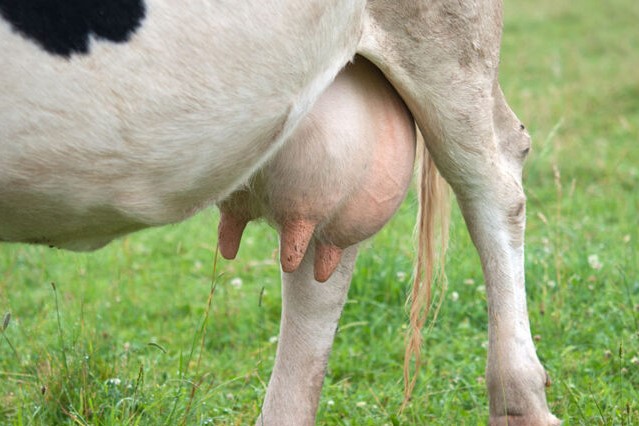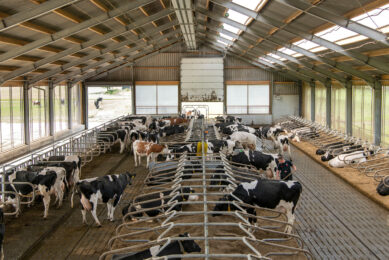US: Costs of over-treating cows with mastitis

Non-severe cases of clinical mastitis are being overtreated by dairy farmers, which is unnecessarily increasing farm costs and a loss of milk.
Research carried out at the College of Veterinary Medicines at Michigan State University found that the direct costs of treatment could be reduced by US$65.20 per case if the minimum labelled durations are used.
US dairy costs
The cost of mastitis to the US dairy industry is approximately US$110 per cow per year and is rising annually. Milk produced by cows while they are being treated with antibiotics must be discarded, as well as the milk produced after treatment during the withholding period, which is normally 3-4 days after the last treatment has been administered.
The study, published in the Journal of Dairy Science, analysed non-severe cases of clinical mastitis in around 50,000 cows on 37 commercial dairy farms in Wisconsin in the United States. It found that milk discarded due to antibiotic treatment represents at least 53% and up to 80% of direct costs for each day of treatment.
For routine treatments, following the minimum labelled duration for mastitis treatment drugs is critical to farm cost savings and productivity, as well as maintaining animal and human health.
Professor Pamela Ruegg, professor of antimicrobial resistance at Michigan State University, said: “Our work indicates that we need to take a hard look at duration of treatment, and unless you can justify improved clinical outcomes, we should treat using the minimum duration listed on product labels and for shorter durations. With that, there’s both a financial saving for the producer and a human health benefit because we’re putting less antimicrobials in our ecosystems. There are benefits for society.”
Save on costs
The opportunity to save on treatment costs and regain revenue from less discarded milk is useful to US producers who are battling against federal milk pricing regulations. They are currently losing on average more than US$6 per hundredweight on farms of more than 50 cows.
Ruegg said mastitis was not going away: “The proportion of cows with clinical mastitis isn’t going down. At best, it’s stable, and at worst, it’s increasing, probably because of environmental pathogens that tend to cause larger inflammatory responses.”
“We have 5 products labelled to treat clinical mastitis in the US,” Ruegg noted. “The FDA approved labelled duration of treatment with those drugs ranges from a day up to 8. People generally treat for 5 days because the milk remains visually abnormal on average for 5 days. Dairy farmers feel like they should treat until it looks like its cured. But a lot of our previous work has shown that the abnormal milk appearance is from inflammation and it’s not predictive of any outcomes like the presence of bacteria or infection recurrence.”
*The report ‘Variation in Partial Direct Costs of Treating Clinical Mastitis among 37 Wisconsin Dairy Farms’ was published on Science Direct and is available here.
Join 13,000+ subscribers
Subscribe to our newsletter to stay updated about all the need-to-know content in the dairy sector, two times a week.










